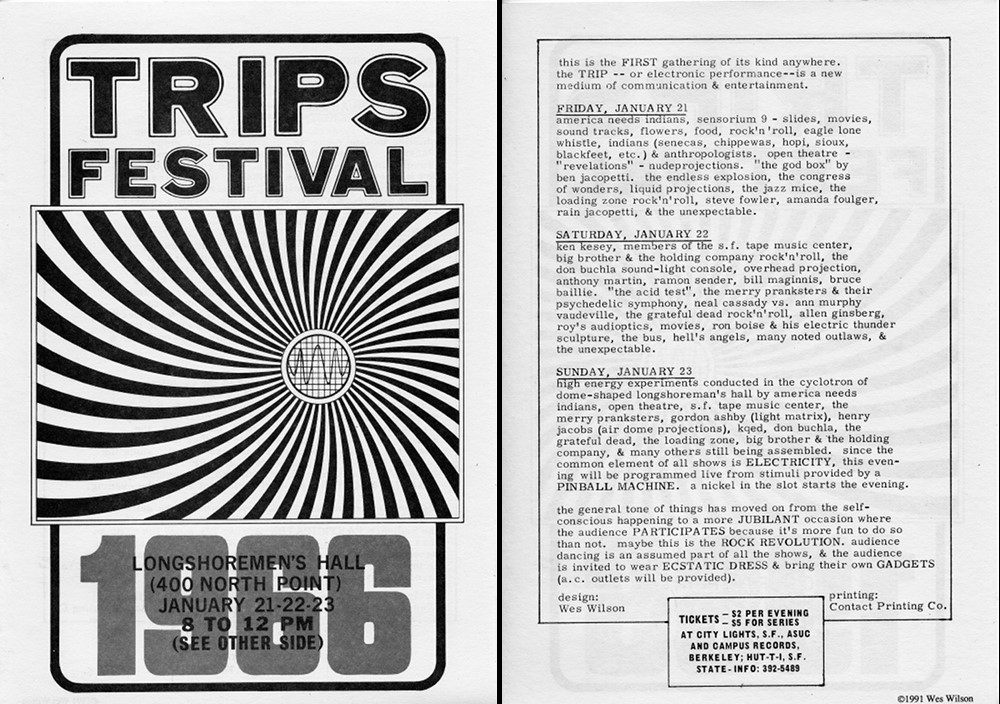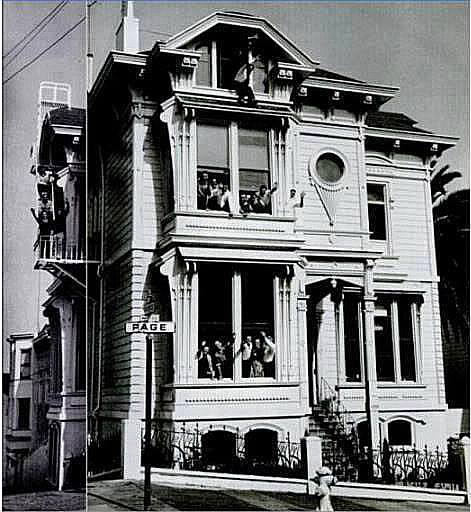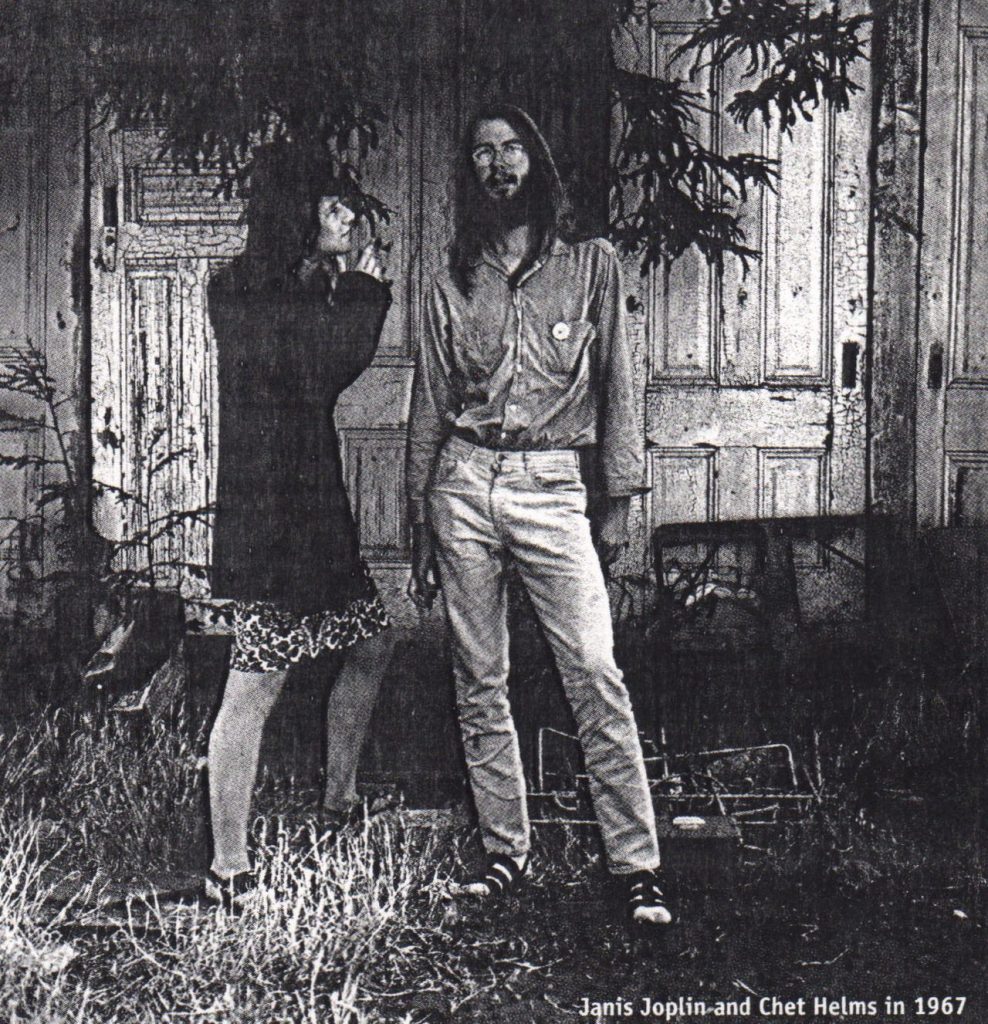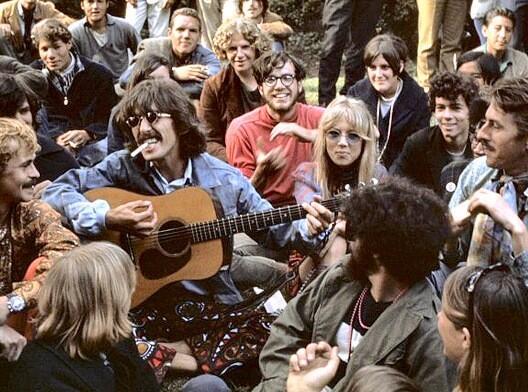Rock critic Joel Selvin on the origins of psychedelic rock in San Francisco–including Ken Kesey and his Acid Tests, the Trips Festival, and birth of bands such as the Grateful Dead and Big Brother and the Holding Company.

Joel Selvin: In San Francisco in 1965, ’66, ’67, there was such an explosion of music, great rock bands – it was just impossible not to be swept up in it. As a copyboy at the [San Francisco] Chronicle, I could get my name on the guest list at The Fillmore. I think I was out like six nights a week watching bands. I’m Joel Selvin, born and raised in Berkeley, CA. At the age of 17, after having dropped out of high school, I went to work as a copyboy at the San Francisco Chronicle and I subsequently took a job there as the pop music critic, which I kept for 36 years. San Francisco was the center of the rock music universe – a truly amazing parade of musical talent. Not only local people, but from all around the world.

Well, the first thing was LSD. In 1964, Augustus Stanley Owsley, III became the first private party to synthesize the formula for LSD, which had been produced since the late 40s by a Swiss pharmaceutical company. Owsley set up business in Berkeley down on Virginia Street, Bear Research Laboratories, and produced – we don’t know? Could be the first two million units of LSD.
Obviously from that epicenter in Berkeley this whole psychedelic movement just sort of spread out. At The Fillmore in December of ’65, The Fillmore was in a black neighborhood, they had run R&B shows there for years. The Acid Tests came in, Ken Kesey and all those guys, had the same staff, right. So the old door guard is this old black guy named John Walker. And John Walker is sitting there and he is watching all this craziness go on. Can’t imagine what he is thinking. But the police come in – San Francisco police – they come in and want to see what is going on here. And they think it’s pretty weird too. And they go to Walker and they go – What the hell is going on here? He says – Don’t worry, they’s in love. Nobody was pushy, nobody was obnoxious. Everybody felt like being in this together was so special that we were automatically bonded and we were all friends immediately just because we were cool enough to be there. Everybody else that wasn’t there, they were missing it.
By 1966 when it was appearing on the cover of Life Magazine and this mind altering chemical, publicity had reached a point where everybody knew about it and those people who were inclined were gravitating toward using it. And this was the center of that. LSD had a tremendous effect on people who took it. And San Francisco bay area, they began to form a kind of community around people who took LSD and one of the first things they did was throw dances with bands. And these bands, who also took LSD, were not really playing old time rock n roll in the way that had been. It just didn’t make any sense. Instead of like, 2-3 little songs, verse chorus, verse chorus, bridge, verse chorus…they started playing instruments and jamming. The audience danced and everybody was on LSD.
The Avalon and The Fillmore in 1966 were pretty much LSD speakeasies. This was like the ground zero for the explosion. And it wasn’t just music, I mean, you can see its effect on organic farming, interest in yoga, the personal computer movement – all those guys were acidheads. Music is just one of the things that came out of that. It was a real prominent, it became the forefront of all of that countercultural movement.

First thing that happens to the LSD community, they wanted to have these public gatherings where they could engage in activity while having the LSD experience. The first of those were kind of informal affairs that were hosted by Ken Kesey, the author of One Flew Over the Cuckoo’s Nest, which had been a best seller. He’s been a volunteer at the Stanford Veterans Hospital where the CIA ran LSD experiments. And that is where he was introduced to it. His idea was to hold this happening. And it was a multimedia event that involved projections, films, noise, and a band. The band was this sort of local electric bluegrass band called The Warlocks. They were the house band. They would go to a house in San Jose, hand out flyers and I don’t know how many people…50, 100, not a big crowd. They had a bunch of these arounds. Of course, The Warlocks would become the Grateful Dead. At the Muir Beach acid test, they met Owsley. So then they had a steady supply of LSD.

Now the Trips Festival was kind of outgrowth of the acid tests. The acid tests had taken place all through the fall and winter ’65 and in early ’66, one of Kesey’s associates, a fellow named Stuart Brand who would go on to start the Whole Earth Catalog. He decided they should do a big three day affair and they rented out the Longshoreman’s hall, which has been the site of a couple of previous acid rock danced by the Family Dog. Really the very first one in October of ’65 with the Charlatans and the Airplane and Great Society.
And oddly enough, they hired to produce the Trips Festival, the square guy who had been the manager of the San Francisco mime troupe. And they’d been arrested for obscenity charges for doing a 15th century Italian play in the park. This was how it was in San Francisco in ’65. And so as part of a defense fund, they held some benefits and the guy discovered producing concerts and how easy it was and how much money you can make. And that would be Bill Graham. And Bill never took LSD. But they got him to produce this Trip’s Festival. And Jerry Garcia forever remembers the first time he met Bill Graham because the Grateful Dead had taken too much acid and they weren’t going to be able to play. They were all way too high. And in fact, Garcia’s guitar had been stepped on in the neck, had been broken off the body. They’re all getting ready to go home, give up and get their gear and not play. And Garcia goes up on stage and he sees this guy with a clipboard under his arm, frantically trying to put the guitar together. In his state high on LSD, Jerry’s just filled with this like sense of warmth and kindness of this man doing this futile impossible task and bending so hard to it. He just loved the guy right away. And that was Bill Graham.
There all kinds of great stories from that night. I mean, Kesey was a fugitive from the law at that point, he’d been arrested a couple times on marijuana charges and he was gone. But he came that night and he dressed in a spaceman suit outfit and he had a helmet on with a visor, had the visor up and he was letting people in for free through a side door. And Bill Graham just came rushing up panic – Like how can you do that? Slams the door shut. And he looks and sees this guy and he looks at him and says, Ken? And Kesey just plops his visor down and walks away. So that was the Trips Festival. It was a mess.
They had the typical garbage pail filled with the Koolaid. It looks to be like somewhere at 900 – 1,000 people, something like that, pretty good crowd, but not sold out and packed or anything. And definitely still like, kind of under the radar, only the people who would have been likely to attend any way, knew that this was taking place. It wasn’t like they were writing about it in the Chronicle or sending TV crews to cover it.
Chet Helms was the son of a preacher. And so he came to San Francisco with what I’ve always thought of as a missionary zeal. So instrumental in the flash point of starting everything. As a pot dealer, he would go around to all the hip boarding houses. He ran across one in Page street that had a ballroom in the basement and he started producing weekly jam sessions in that ballroom.

And pretty much the entire San Francisco scene flitted through those jam scenes – Big Brother and the Holding Company was founded there. They were kind of the house band. All the guys from Quicksilver played together for the first time at those jam sessions. The Dead were there. And that was just the very beginning. That was like one of the very first laboratories. where this germ could be worked on in a petri dish. Now Chester attended all the early events. He was just an avid enthusiast, like I said, a missionary. And at some point when the hippie commune that through the first really three acid rock dances called themselves The Family Dog decided not to do it anymore, Chester took over their name and found the Avalon ballroom.

And he’d thrown a couple of concerts in partnership with Bill Graham. But Bill was not a good partner and pretty quickly Chester was on his own again. And that’s when he opened the Avalon. The Avalon ran for two and a half years. It was the real hippie dance hall. Graham ran the Fillmore, which Janis Joplin famously said, was a place where sailors went to get laid. The Avalon was just a complete anarchistic mess and had wonderful shows, extraordinary lights, and everybody was on acid. Now The Fillmore was great. There was plenty of great music there. There’s plenty of great shows. There are plenty of plenty of people on acid, but that was definitely the establishment and the Avalon was definitely the commune.
Summer in San Francisco in ’67 was a hell on earth. Flower children had turned into street people. It was overcrowded. It was crime ridden. It was filthy. The drug scene had gone from psychedelic to narcotic. The people in the Haight were fighting with the cops by July. I mean, lobbing firebombs at the police. I’m not saying the police were exactly that kind or generous toward the hippies, but hippies to not throw firebombs – peace and love, remember. So the whole thing had completely degenerated. I mean, the music survived. And the fact is that the demand for the music grew so much out of that the bands were no longer part of the neighborhood and they were being paid sums of money. Their economics were drawing them out in San Francisco. And really a year before had been just us small scene in a few neighborhoods. And these bands had this very specific constituency and now they’ve become like item attraction, The Airplane, The Dead, Quicksilver, Big Brother, Country Joe. There were started working elsewhere and being part of this growing movement. And other bands took their places, you know, Santana. It’s A Beautiful day. Creedence Clearwater Revival. It’s not the San Francisco scene wasn’t truly creative and abundant and everything, as far as music goes, but socially, culturally, the Haight was over. The Summer of Love killed it. By the time of George Harrison, The Beatle, showed up in August and toured the flotsam and jetsam that lined the street. You know, he was so disgusted. He never took drugs again in his life.

In October, The Diggers who serve the community organizers around the Haight, they held am adhoc ceremony called the death of a hippie and they had a funeral march right down Haight street. And in March 68, the Grateful Dead moved out of the Haight to Marin Country and Sonoma. Man – it was over, not the music, you understand, not the culture, culture was just dispersed and it was like difficult to track the trace elements.
Recent Comments